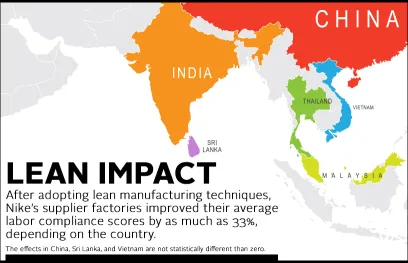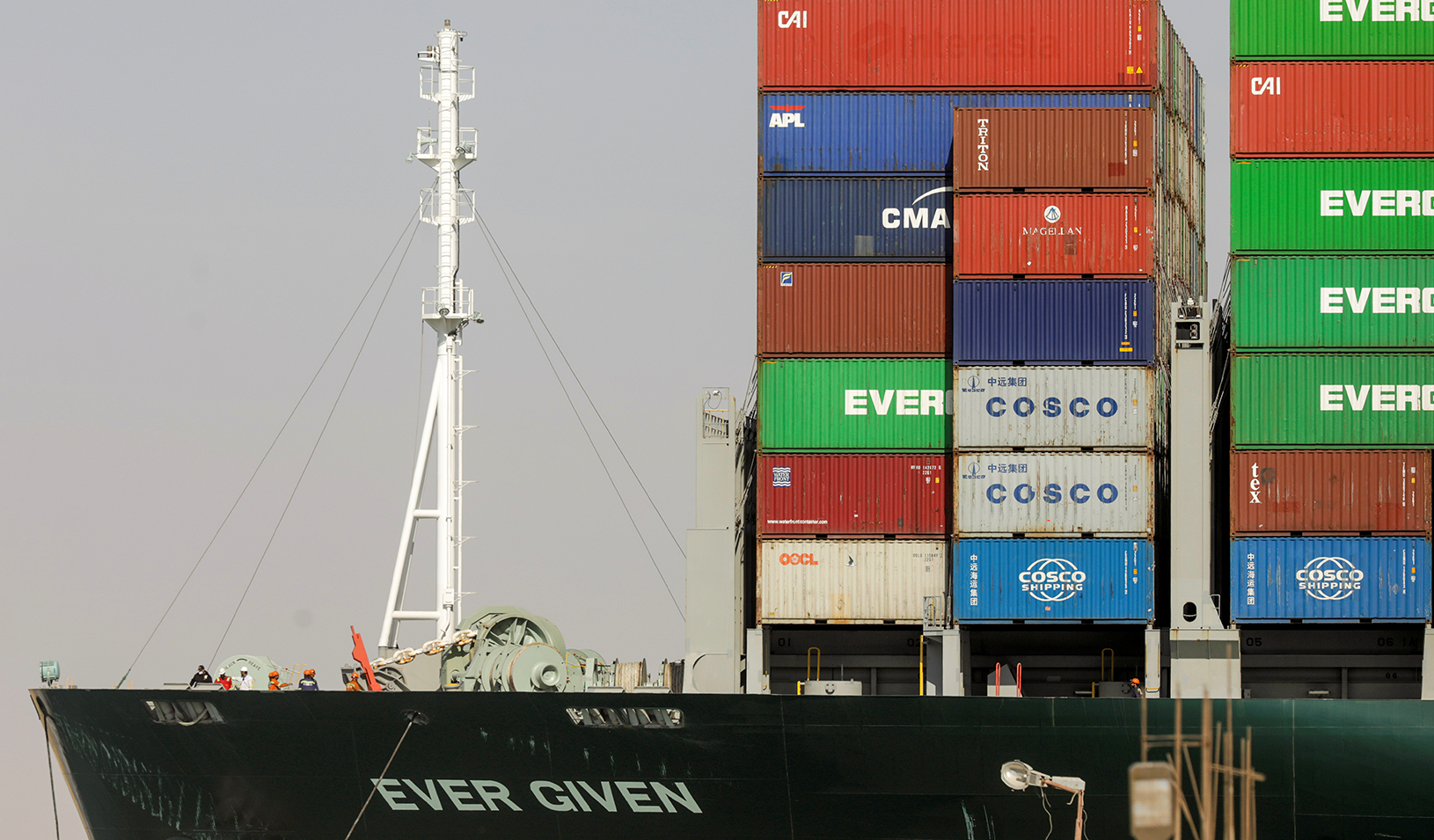
Factories that employed lean manufacturing saw improved work conditions. | Reuters/Kham
As multinational enterprises increasingly look to less-developed countries for manufacturing needs, is it possible to reconcile the tension between ethical sourcing and bottom-line business incentives?
Even for companies actively working to eliminate sweatshops in their supply chains, it can be an uphill battle. Corporate social responsibility programs designed to address poor working conditions in emerging markets are often costly to implement, challenging to evaluate, and difficult to sustain.
New research shows one possible solution: lean manufacturing.
Jens Hainmueller, a professor of political economy at Stanford Graduate School of Business, along with Greg Distelhorst at MIT and Richard M. Locke at Brown University, analyzed Nike supplier factories that switched from traditional to “lean” manufacturing, which emphasizes efficiency and responsiveness to increase production quality. They saw a surprising spillover effect of improved conditions for workers.
Given Nike’s stature as one of the biggest apparel companies in the world, the results should be an eye-opener to anyone interested in addressing social and ethical issues in global supply chains, says Hainmueller.
A Natural Experiment at Nike
In the mid-2000s, Nike launched a program to boost supply-chain productivity and quality by introducing lean manufacturing principles to its apparel suppliers in the developing world. Developed by Japanese automakers after World War II, the lean production method focuses on eliminating waste, emphasizing flexibility, and enabling skilled workers.
In a traditional apparel factory, workers might specialize in performing routine tasks, such as sewing individual seams. Large bundles of inventory might stack up while waiting for other parts of production to catch up. In this setting, a garment that needs only a few minutes of actual labor might take days to assemble. Inventory buffers also make it harder for factories to respond if a company decides to change an order size, say for a design change or in response to consumer demand, which adds costs and limits responsiveness.

Infographic by Tricia Seibold
In a lean environment, workers learn to perform a variety of tasks while taking an active role in process improvements, and inventory buffers are viewed as a wasteful enemy: Sewing, ironing, and packing might all be linked in a single process in one integrated system.
While Nike’s program trained senior management from apparel suppliers on lean processes in waves starting in 2009, the company simultaneously performed audits of the working conditions in its supplier factories. Every 12 to 18 months, Nike scored each factory on a variety of labor standards (such as wages, working hours, and disciplinary actions) as well as health, safety, and environment standards (such as access to emergency exits and safe storage of hazardous chemicals). The resulting grades in the two compliance areas ranged from A and B ratings for factories with good workplace conditions to C and D ratings for factories demonstrating serious violations.
While Nike’s compliance program was not related to the company’s lean-adoption program, the high-quality data collected from each offered the researchers a natural experiment of sorts to answer a simple question: What happens to labor standards after a factory goes lean?
The Spillover Effects of Lean
While previous research has looked at how lean affects business factors like productivity and financial performance, little is known about its impact on working conditions, especially in the developing world. One intuition might be that the emphasis on efficiency and quick turnarounds wouldn’t bode well for labor standards. “We were not confident that we would find positive effects,” Hainmueller says. “This is something Nike committed to for business reasons, to increase efficiency and be more productive. It’s not clear that workers would necessarily benefit from it at the end of the day.”
And yet, by looking at the scores for the years before, during, and after a factory adopted lean practices — and controlling for other factors — the researchers were able to pinpoint its effect on labor compliance. Adopting even a single lean production line was associated with a labor compliance improvement of nearly a third of a letter grade, while a 100% lean factory saw an improvement of over half a letter grade. Overall, lean adoption reduced the probability of serious labor violations by 15 percent. The researchers also found a statistically uncertain but still positive effect on health, safety, and environmental compliance. “I didn’t expect to see much of a difference,” Hainmueller says. “But the effect was quite sizable.”
What’s more, he says, introducing lean techniques didn’t just dramatically bump up compliance grades — it also helped factories cross a critical divide. “It typically occurs in this crucial transition between the C-to-D grades, where you see the more serious violations, to the A-to-B grades,” Hainmueller says. In other words, the gulf that marks the difference between an unacceptable and an acceptable factory in Nike’s eyes.
Digging Deeper
What about lean makes for better working conditions? One explanation, Hainmueller says, could be that going lean kicks off a virtuous cycle where workers are expected to be more than just cogs in a machine. That means managers invest more in worker training, which makes retention and motivation more important, which leads to more equitable terms of employment. “With these efficiency gains, you basically increase the size of the pie, and you can share more of that back with the workers,” he says.
Looking across the spectrum of countries supplying Nike apparel, the researchers discovered a notable limitation to their finding. While lean adoption had a large effect on labor compliance scores in India and Southeast Asia, some countries, such as China and Sri Lanka, saw no such benefit. In Sri Lanka, the broad majority of non-lean factories already scored well on labor compliance ratings, leaving little room for improvement. However, factories in China — by far Nike’s largest supplier country — typically score much lower on labor compliance grades and saw no measurable increase as a result of lean adoption.
Hainmueller says that it’s difficult to pin down why Chinese factories saw no compliance benefit from lean adoption. “Countries are different on so many dimensions,” he says. “The broader interaction between the government and the companies matters quite a bit, in terms of enforcing some of these labor standards, and ensuring that workers have a way to consult the courts, or sue the company, or engage in protest in order to improve things. Perhaps it takes a minimum labor standard of workers’ rights, which you might have more in a country like Vietnam than in China.”
Even if adopting lean manufacturing is no silver bullet for eliminating poor working conditions, Hainmueller is especially optimistic about the implications for sustainably aligning a company’s global business operations and corporate social responsibility efforts.
“There obviously might be other consequences that we have not looked at, but the beautiful result is that there is a business case for doing this and it’s in the company’s best interest to sustain it,” he says. “But it also seems to have these positive social consequences. It’s a win-win. Why not go for it, even if all you want to do is maximize your profits?”
For media inquiries, visit the Newsroom.






